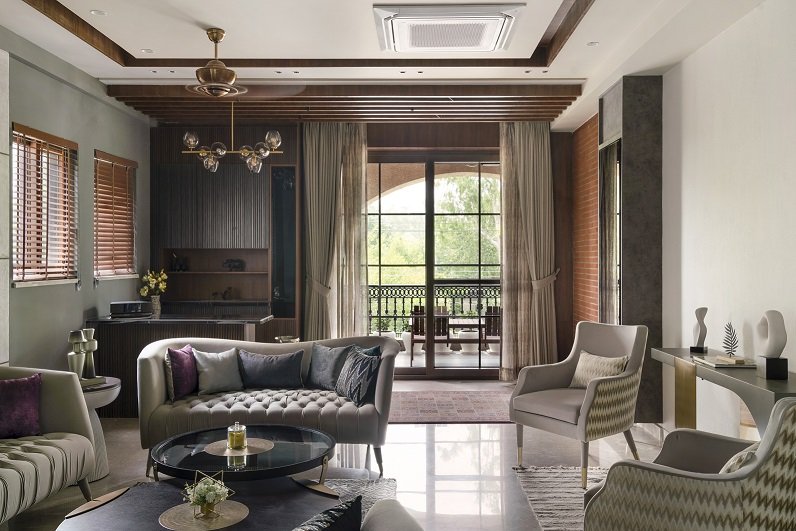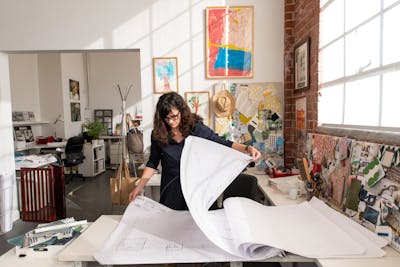The Art of Balance: Just How Interior Design and Home Designer Collaborate for Stunning Outcomes
In the world of home style, striking an equilibrium between looks and functionality is no little feat. This fragile equilibrium is attained through the harmonious cooperation between indoor developers and architects, each bringing their distinct competence to the table. Remain with us as we explore the complexities of this joint process and its transformative effect on home layout.
Comprehending the Core Differences In Between Interior Layout and Home Architecture
While both Interior Design and home architecture play essential functions in creating visually pleasing and functional areas, they are inherently different self-controls. Home style mainly concentrates on the structural aspects of the home, such as developing codes, safety policies, and the physical building of the room. It deals with the 'bones' of the structure, collaborating with spatial measurements, bearing walls, and roof covering designs. On the other hand, Interior Design is extra worried with boosting the sensory and visual experience within that structure. It involves picking and preparing furniture, choosing color schemes, and integrating ornamental elements. While they function in tandem, their duties, responsibilities, and locations of knowledge deviate significantly in the creation of a harmonious home environment.
The Synergy Between Home Style and Inside Design
The harmony between home architecture and Interior Design exists in a shared vision of design and the improvement of functional aesthetics. When these 2 fields align harmoniously, they can change a living room from normal to extraordinary. This collaboration needs a deeper understanding of each discipline's concepts and the capacity to develop a natural, cosmetically pleasing atmosphere.
Unifying Style Vision
Linking the vision for home architecture and Interior Design can create an unified living area that is both useful and visually pleasing. The equilibrium begins with an integrated attitude; designers and indoor designers collaborate, each bringing their experience. This unison of ideas develops the layout vision, a blueprint that guides the job. This shared vision is necessary for consistency throughout the home, making sure a fluid change from outside style to interior areas. It promotes a collaborating technique where building elements enhance Interior Design elements and vice versa. The outcome is a cohesive living area that shows the property owner's lifestyle, personality, and preference. Thus, unifying the layout vision is crucial in mixing architecture and Interior Design for stunning outcomes.
Enhancing Practical Appearances
Just how does the harmony in between home architecture and Interior Design boost practical aesthetic appeals? This harmony allows the production of areas that are not just visually attractive yet also easily functional. Engineers lay the foundation with their architectural design, making certain that the room is effective and functional. The interior designer after that matches this with meticulously selected elements that boost the aesthetics without compromising the functionality. This harmonious cooperation can lead to homes that are both gorgeous and liveable. For instance, an architect might create a house with large windows and high ceilings. The interior designer can after that accentuate these functions with large drapes and tall plants, specifically, thus improving the aesthetic allure while keeping the functional advantages of natural light and spaciousness.
Relevance of Cooperation in Creating Balanced Spaces
The partnership in between indoor developers and architects is crucial in creating well balanced spaces. It brings consistency in between style and architecture, providing birth to rooms that are not just aesthetically pleasing however also functional. Checking out successful collective techniques can provide understandings right into how this harmony can be effectively achieved.
Harmonizing Layout and Architecture
Balance, an essential facet of both Interior Design and architecture, can only genuinely be achieved when these two fields operate in consistency. This consistency is not simply an aesthetic consideration; it affects the performance, toughness, and inevitably, the livability of an area. Inside architects and developers have to understand each various other's functions, value their know-how, and connect effectively. They need to think about the interplay of architectural elements with decor, the flow of spaces, and the impact of light and color. This collaborative process results in a natural, Countryside Homes interior design balanced layout where every component has a purpose and adds to the overall visual. Therefore, balancing layout and style is not simply regarding producing beautiful areas, but regarding crafting rooms that function effortlessly for their inhabitants.
Successful Collaborative Techniques

Instance Studies: Effective Assimilation of Design and Architecture
Taking a look at a number of situation researches, it becomes evident exactly how the successful integration of interior design and design can transform an area. Engineer Philip Johnson and interior developer Mies van der Rohe collaborated to produce an unified equilibrium in between the structure and the interior, resulting in a smooth flow browse this site from the exterior landscape to the inner living quarters. These case research studies highlight the profound impact of an effective style and design partnership.

Getting Rid Of Difficulties in Layout and Architecture Cooperation
Regardless of the obvious benefits of a successful cooperation in between Interior Design and design, it is not without its obstacles. Communication issues can occur, as both celebrations may use different terminologies, understandings, and techniques in their job. This can lead to misunderstandings and hold-ups in job completion. More Bonuses Another significant challenge is the balancing act of appearances and functionality. Designers may prioritize structural honesty and safety, while developers concentrate on convenience and style. The assimilation of these objectives can be complicated. Additionally, budget plan and timeline restrictions typically include stress, possibly causing breaks in the cooperation. As a result, reliable communication, shared understanding, and compromise are important to overcome these obstacles and attain a harmonious and effective collaboration.

Future Trends: The Developing Partnership Between Home Architects and Inside Designers
As the globe of home design proceeds to evolve, so does the relationship between designers and indoor designers. The trend leans towards a more incorporated and collective strategy, damaging devoid of typical roles. Designers are no much longer exclusively concentrated on architectural integrity, yet also involve in enhancing visual allure - Winchester architect. Alternatively, interior developers are accepting technical facets, affecting total layout and functionality. This developing synergy is driven by advancements in technology and the growing demand for areas that are not only visually pleasing however sustainable and also sensible. The future assures a more natural, ingenious, and flexible approach to home style, as developers and architects remain to obscure the lines, fostering a relationship that really symbolizes the art of equilibrium.
Final thought
The art of balance in home layout is attained through the harmonious partnership in between interior developers and architects. Despite difficulties, this partnership fosters development and technology in style.
While both interior design and home style play essential roles in producing aesthetically pleasing and useful areas, they are inherently different techniques.The harmony between home architecture and indoor design lies in a common vision of layout and the enhancement of practical aesthetic appeals.Unifying the vision for home design and interior design can develop an unified living space that is both practical and cosmetically pleasing. Therefore, unifying the layout vision is critical in blending style and indoor layout for spectacular outcomes.
Just how does the synergy between home design and indoor style enhance useful aesthetic appeals? (Winchester architect)